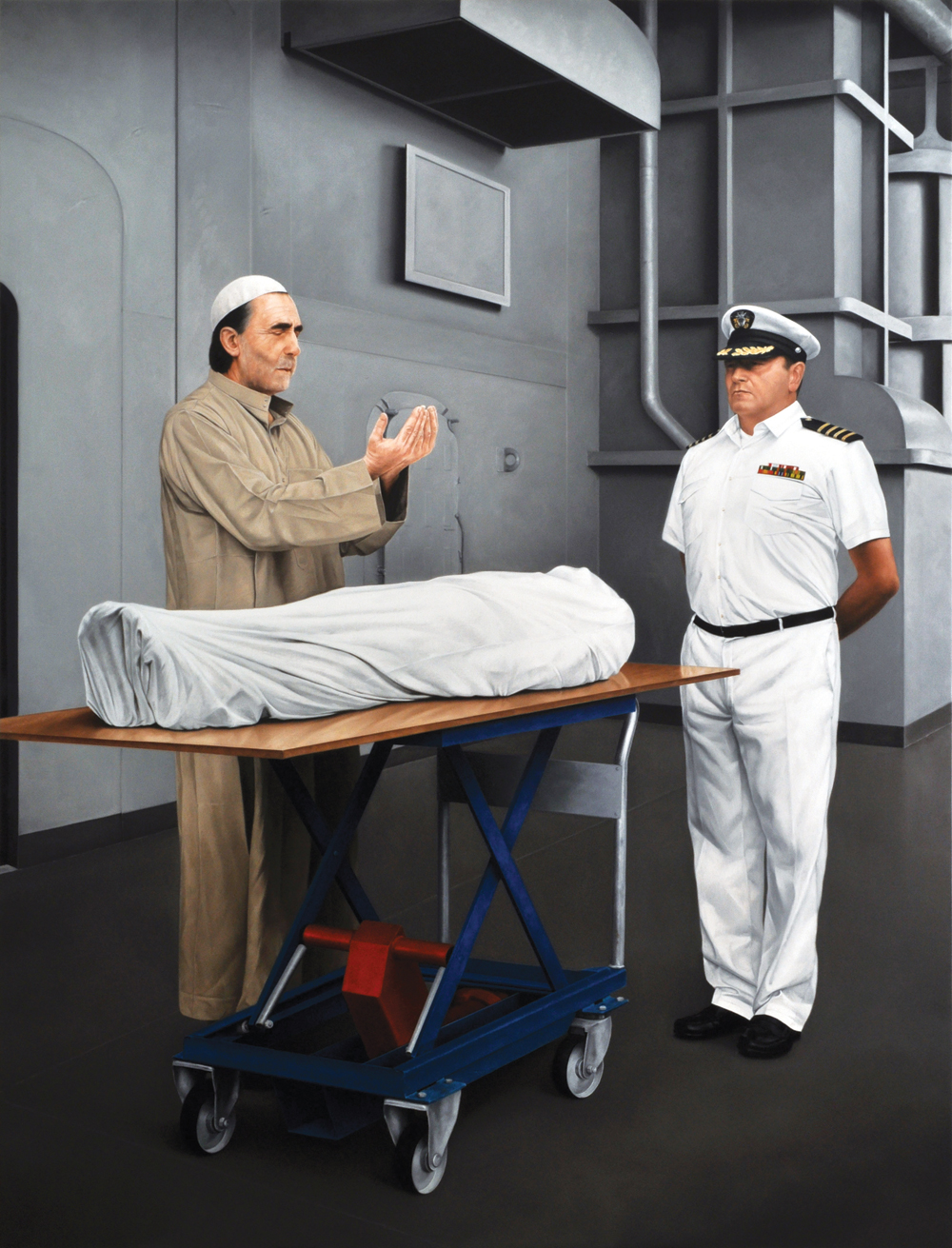« Features
Push to Flush: The Post-Reality Axiom (Or Why Nobody Cares About Osama Bin Laden’s Death)
“Tell from time to time the truth, so they will believe you when you lie,” French playwright Jérôme Touzalin once said. This strong statement deals not only with truth and lies, but it also invokes, in a particular manner, concepts like reality and representation, veracity and fiction, veridicality and plausibility; in a more general sense, we find here one of the best descriptions of the shift from modernity to post-modernity.
In pre-modern times people believed in their gods. Even though they never got to see them, they would swear that their disgraces and ventures were the exclamation of their temperaments. Remember Pindar’s First Olympian Ode: “It’s better for a man to speak well of the gods.” With the advent of modernity we were taught to believe only in what we saw. Seeing is believing. This “regime of truth” was first based on static, then later also on moving images. Remember how photography became an index of reality (albeit a problematic one, as we know by now!) But this regime of visual truth came into crisis with post-modernity and its unsettling mix of simulacrum and storytelling. Reality has ceased to be an image to become a dogma of faith. In other words, if modernity was about the old debate of truth versus falseness, post-modernity is about good lies versus bad lies.
YES, WE CAN… BELIEVE
President Barack Obama appeared on television on May 1, 2012, to announce the death of Osama bin Laden. In the perfect setting of the White House, Obama staged an impeccable and semiotically very convincing speech that connects to other important speeches in America’s history-from Woodrow Wilson to Franklin Delano Roosevelt to even George Bush in his post 9/11 address. Like a mantra, Obama uttered phrases like “[o]ur commitment to stand up for our values abroad and our sacrifices to make the world a safer place” and “[b]ecause of who we are: one nation under God indivisible, with liberty and justice for all.” According to Obama, the body had been deposited into the sea after being administered Muslim rites. To this day, no image or “burden of proof” has been shown (though we did see the bodies of Gadaffi and Saddam Hussein). Obama, like the ancient gods of Greece, asked us to believe. For him, it is a simple axiom to be accepted without any controversy.
Recently, this same idea was reinforced by filmmaker Kathryn Bigelow’s Zero Dark Thirty, a spectacular film about the hunt for and killing of bin Laden by CIA agent Maya. The film reminds us in the paratexts at the very beginning that “The following motion picture is based on first-hand accounts of actual facts.” In other words, the film has a claim on truth. Basically, Bigelow conceived a thriller in which torture (fettered with sexual humiliation) is the key to the killing of bin Laden. So popular culture, with its vision of a “good war,” as Susan Sontag would have put it, reinforces the simplistic Obama-Osama dialectics: hero-villain, good guy-bad guy, civilized-barbarian.
Now, within the domains of the art world, a recent painting by Spanish artist Kepa Garraza re-creates the burial of bin Laden according to the information released by the Pentagon. Unlike most of the information that appeared in Western media, which was aseptic by nature, Garraza stages a theatrical, dramatized and sensationalist countervisuality, so much so that even the burial of Abu Nazir in Homeland resembles his painting.
Another interesting early artwork of 2003 by British artist collective Ben Langlands and Nikki Bell shows an interactive cartoonish video animation of one of the houses in which bin Laden had been hiding out in Darunta (Jalalabad) between May 1996 and September 1997. Titled The House of Osama Bin Laden, the installation allows the visitor to hunt for bin Laden with the help of a joy stick, but all of the spectacularity and violence of video games has been removed, ultimately offering a failed gamer experience.
These four examples showcase different claims toward iconicity, intentionality and credibility. Surprinsigly enough, it’s the painting and video installation that challenge the official Pentagon‘s storytelling, while the President’s speech and the film symbolize actual neo-liberal ideology in a post-reality in which Obama holds that believing is more important than seeing.
Is it important to see an image of the corpse of Osama Bin Laden? Is the verbal description of the death by President Obama credible enough?
Everybody is convinced they would take the red pill if they were in Neo’s shoes, but nobody wants to “see how far down the rabbit hole goes.” Maybe now that Edward Snowden has discovered for us this new matrix called the NSA, we should recall Morpheus’ words: “For the longest time I wouldn’t believe it, and then I saw the fields with my own eyes.”
This public place called democracy demands a responsible, fluid and plausible information.
We want to believe, but we also want to see!
Paco Barragán is an independent curator and arts writer based in Madrid. He is curatorial advisor to the Artist Pension Trust in New York and recently curated “The End of History…and the Return of History Painting” (MMKA, The Netherlands, 2011). He is co-editor of When a Painting Moves…Something Must Be Rotten! (2011) and the author of The Art Fair Age (2008), both published by Charta.





































Leave a Reply
You must be logged in to post a comment.